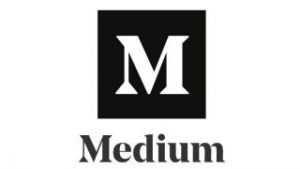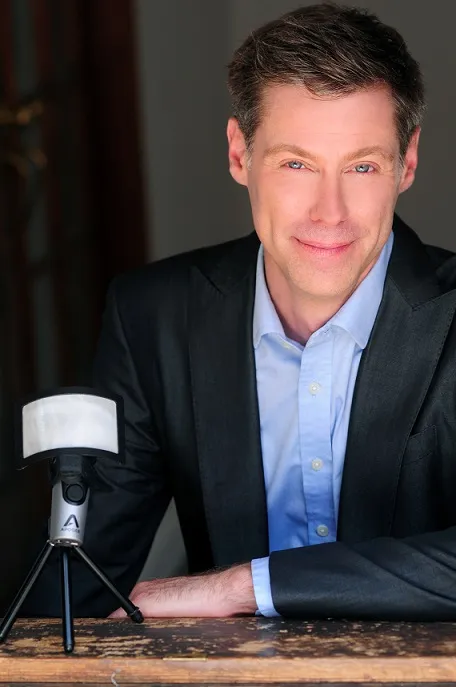https://medium.com/@roysamuelson/audiodescription-239d4b916837
Did You Know Of This Way To Enjoy Movies and TV Shows?
First, let’s listen to this scene of a movie without visuals. That’s how blind and low vision people watch movies, but without Audio Description.
But there’s another way for these audiences to enjoy movies and tv shows. Now, hear that same clip with Audio Description.

Audio Description (aka video description) is a special audio track where a narrator voices the visuals relevant to the plot.
Audio Description provides access to key visual elements, without interfering with the audio or dialogue (The narration describes visual elements, such as actions, settings, body language, graphics and subtitles). Think of it like a sports announcer on the radio, giving the play by play, but for a movie or tv show, instead of a game.
Audio Description is rapidly growing. More TV programs and films integrate it into their properties, through FCC requirements, or a growing awareness of the market share:
• 26 million adults in America are blind and low vision
• The FCC mandate for Audio Description in television is growing
• Streaming services like Netflix, Amazon Prime Video, and Hulu follow this lead
• The upcoming Disney+, HBO Max, and Apple’s original content is sure to have access
• Currently there are 400+ episodic shows, on TV and streaming services, that provide Audio Description, not even including feature films
While supporting the blind and low vision community is an integral part of this work, sighted audiences can also enjoy the benefits of Audio Description, particularly when commuting, cooking, giving their eyes a break from staring at a screen, or helping keep track of multiple characters.
Audio Description is intended for blind and low vision audiences so some make a comparison to Closed Captioning, because both provide disability access. There are differences: Closed Captioning is text over the video that spells out audio cues, specifically dialogue. While closed captioning is text only, Audio Description is a fully produced audio track that lives on top of the audio of the tv show or film.
This track needs to fit in perfectly with the existing tv show or movie. The timing, levels (how loud it is, particularly during quiet or loud parts of a show), and the rate (how fast or slow the narrator is) needs to fit in between the dialogue so as not to overlap the characters talking.
This added audio track could not be done without the expertise of amazing Audio Description writers, directors, editors, mix engineers, and a narrator all focused on being a part of the story. It is truly a total team effort!
The narrator for Audio Description could be a synthesized voice, similar to Siri on Apple devices, or “Hey Google” — or Amazon’s Alexa. For Audio Description of informational videos, this is a great way to quickly and easily add Audio Description. But with TV shows and movies, a synthesized voice loses the emotional elements that a professional voice artist can bring. Imagine a happy scene in a movie, but the narrator has a cold, distant read, or a tragic scene, where the narrator reads with a clear cadence and smile. Both of these examples would take you out of the story, and distract you away from the emotional elements.
But an Audio Description narrator performance is more nuanced than that. Many audience members can be distracted by a narrator who might be too connected to the story, which can also prevent the audience from fully immersing themselves.
If you notice the narrator, it’s most likely the narrator isn’t blending into the story. But thankfully, many networks, streaming services, and movies are aware of this, and hire vendors who are sensitive to this nuance of emotion.
For the narrator, the skills of audiobook narration, and acting for the emotional connection are essential for excellence in Audio Description quality. Most scripts are read with no preparation, called a cold read. Specific timing, visual, audio, and pace cues can make or break a studio session due to fast turnaround, so some experience in timing is essential. The quality of the read needs to blend in to the story, so as not to distract the audience. With a narrator’s voice, a blind person can more fully enjoy a film or TV show, and catch essential elements of the producer’s intent.
There are many changes happening with accessibility in the entertainment industry. On the front line, performers with disabilities are getting the opportunities they deserve, and this kind of representation matters. Behind the scenes, disabled writers, directors, music mixers, and many other entertainment roles are getting their fair shot too, and these opportunities are growing with more awareness.
The focus here is on our audiences who are blind and low vision, so here’re a few things you can do:
Share Audio Description with those who may not be aware of it. Learn about accessing Audio Description on cable boxes, tablets and smart phones, and streaming devices. The Audio Description Project has a full list here.
Call or email networks, streaming services, movie companies, and any other media to request them to have Audio Description. Blind and low vision audiences’ voices are heard by tv networks, streaming services, and movie companies. Name shows you specifically would want to have Audio Description, and if you have a favorite narrator, ask for them by name.
A great resource is the Audio Description Project https://www.acb.org/adp/ so take some time to click around and explore the world of Audio Description.
It’s an exciting time to advocate for blind and low vision audience members. How great for you to be an active part of this advocacy!
Want to know about Audio Description Excellence? Check out this Medium article.
After narrating Audio Description on over 400 TV shows and films and counting, Roy actively engages with those involved with this work, from producers and directors, to post production supervisors, vendors, writers, engineers, other advocates, and most importantly the blind and low vision community. He is passionate about this work. Follow him on twitter @roysamuelson and read his alt text on instagram at @roysamuelson and check out his website.



